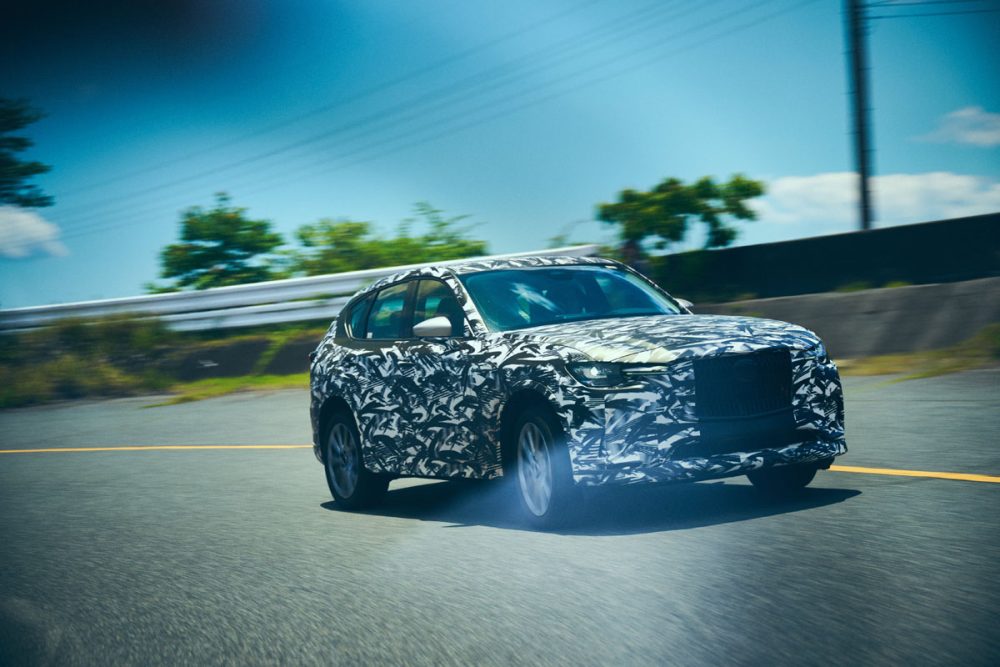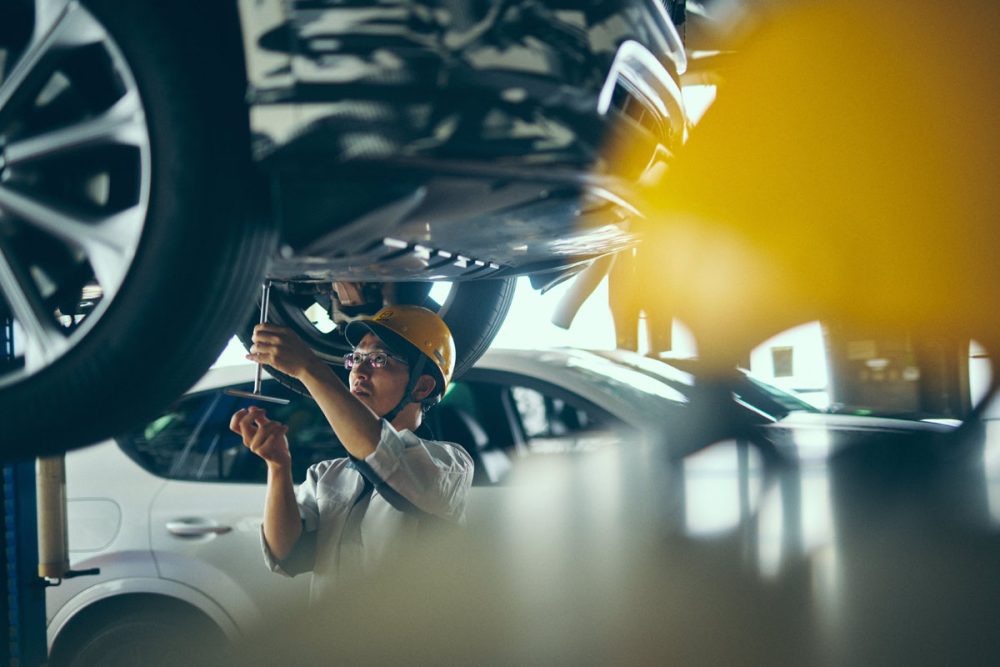Every Mazda must pass a series of strict tests before entering the market, and it is on the test track at the headquarters in Hiroshima that Mazda’s engineers create an unforgettable driving experience.
One mission motivates everyone at Mazda more than anything else — to provide a sense of pure happiness and empower every driver once they get behind the wheel. That feeling, experienced by drivers and passengers around the world, has been driving Mazda’s innovations for almost 100 years and today forms a key part of the new model development process.
Talented engineers who, in all disciplines, work tirelessly to provide every driver with an exciting driving experience are responsible for maintaining the continuity of this philosophy. Masayoshi Kanei is one such engineer who joined Mazda’s development team 14 years ago and tests both prototypes in development and development vehicles close to production, including the Mazda CX-60 PHEV. Just don’t call him a test driver.
“At Mazda, we don’t call ourselves test drivers because we are involved in every step of development, from initial planning to approval of a production model ready for launch,” he explains. “Yes, we test a lot of cars that come through our department to check the data and assess their handling and quality and whether they are ready for the roads. However, another key parameter is what we at Mazda call ‘performance feel’, which focuses on the human perception of the car’s acceleration and motion.”

“I’m in charge of powertrains,” he continues. “We work with other engineers to discuss details like engine settings, acceleration and power output.” Even when the car exists only on paper, these processes are still used to determine the feasibility of the design.
After hitting the test track, Kanei uses all his senses to assess the vehicle’s performance. “For example, during acceleration you need to be able to measure and evaluate even the smallest change in aspects such as g-force and jolts through your body,” he says. “Those factors significantly affect your in-car experience as a driver.” Jerk is a vector that changes in acceleration over time and Mazda considers it one of the key parameters in the further development of its human-centered innovations.
However, Kanei also acknowledges that human senses are crucial but not perfect. “We take our personal judgments to the (powertrain) designer and combine them with numerical data to configure a better powertrain that can perform exactly the way the driver wants it to.”


The best of both worlds
This process played a particularly important role when Kanei was working on the CX-60 and its e-Skyactiv PHEV powertrain. “The PHEV is a vehicle that uses the best parts of both an internal combustion engine (ICE) and an electric vehicle,” Kanei says. When the PHEV’s battery is charged, the vehicle runs on electricity, saving fuel. If you want to accelerate on the highway, then the car decides to use the internal combustion engine to gather enough power to reach the required speed.
“But sometimes you feel that the car is not accelerating as fast as you would like. Or, on the contrary, you feel that the switch to the SUS engine happens too quickly. That’s one of the common problems with PHEVs,” says Kanei. That transition from electric power to the internal combustion engine can be demanding in terms of fine-tuning, he says, but it remains a crucial task. After all, he wonders, “wouldn’t you be scared if the car didn’t react the way you wanted it to?”


The CX-60 PHEV brought new challenges, but Kanei and his team were pleased to be able to solve them; in the end, they produced a PHEV powertrain system that provides dexterity and precision driving. “It wasn’t that easy to achieve the level of driving we’re looking for in a Mazda, but in the end we succeeded,” Kanei says with a smile. In short, the car is designed to go exactly the way you want it to go.
Still, there’s no denying that vehicle testing is a key part of the development process, and Kanei admits he does it often – from Mazda’s secret testing grounds in Japan to Germany’s world-famous Autobahn. “Because we’ve been involved from the start, we set our own parameters and goals for the powertrain to ensure that every car is a joy to drive,” he says. “Whether it’s a PHEV or not, during the test drive we have to ensure that those parameters and goals are inevitably achieved. The margin for error in judgment during test drives is very narrow.”


Prepared for everything
The pressure is on Kanei and his fellow engineers, but they are more than qualified for the task. Having worked on models such as the Mazda CX-30 and the latest CX-60, Kanei explains that Mazda uses a system that ensures their engineers are well equipped for any task.
To achieve this goal, a system of strict rules is in place designed to give Kanei and his colleagues the skills needed to make fair, consistent and, most importantly, safe assessments. The system starts at a beginner level, suitable for exploring Mazda’s impressive Hiroshima headquarters, and works its way up to higher qualifications which, as Kanei explains, allow drivers to test the vehicle “at maximum permitted test drive speeds”. In accordance with Mazda’s principle of putting the driver first, the most important factor here is to recognize what will best suit the end user.


Those differences in ability between entry level and higher levels can be significant. “During a test drive, you have to accurately assess the car’s performance, regardless of the conditions. If you are unable to do this, the development team will not give legitimacy or trust to your judgments,” Kanei continues.
Driving at different speeds is a key indicator of a car’s performance. Given that Kanei can test various models at extremely high speeds, on everything from dry straights to wet corners, it’s clear why Mazda applies this strict licensing system: to ensure that each car is always a pleasure to drive, even at extreme loads and to keep these talented employees safe while performing their tasks.


Looking to the future
Before starting his professional journey at Mazda, Kanei already mastered the basics of high-efficiency engine development at university. When asked which model has been his favorite to test so far, he answers without hesitation: “It’s always the latest model I’ve worked on.”
“Considering that today’s technology is rapidly developing, new challenges always appear that need to be overcome, and as an engineer you always have to raise your own standards in order to meet them. That’s extremely exciting to me.”
“I am sure that the next project will bring us another completely new challenge, but we will gladly accept it because, as far as our work is concerned, there is no end to the challenges,” he concludes. “Constant improvement is the only way forward.”
Tekst Shogo Hagiwara / fotografija Eric Micotto


Source: www.magazinauto.com


